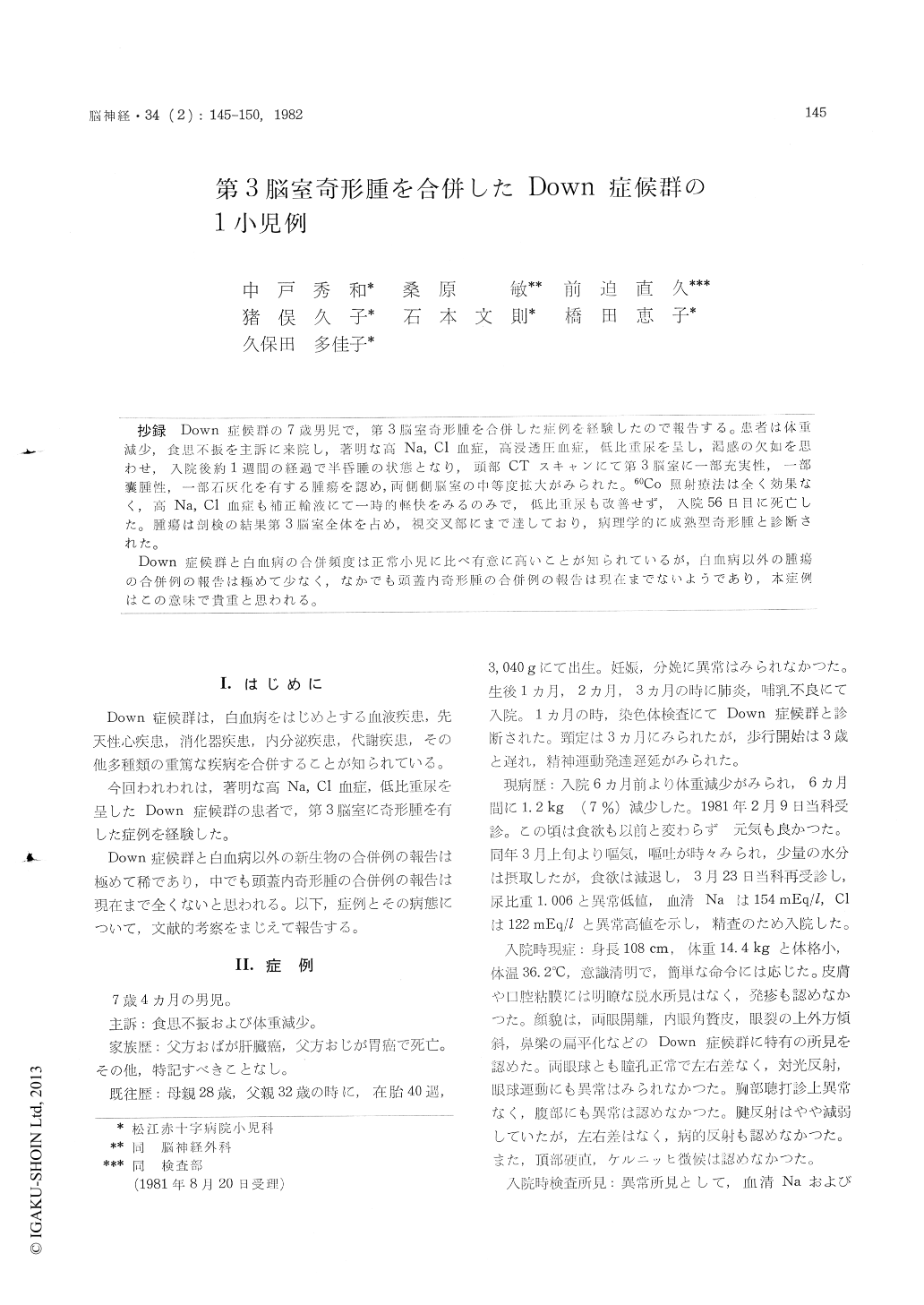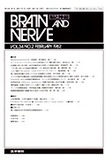Japanese
English
- 有料閲覧
- Abstract 文献概要
- 1ページ目 Look Inside
抄録 Down症候群の7歳男児で,第3脳室奇形腫を合併した症例を経験したので報告する。患者は体重減少,食思不振を主訴に来院し,著明な高Na,Cl血症,高浸透圧血症,低比重尿を呈し,渇感の欠如を思わせ,入院後約1週間の経過で半昏睡の状態となり,頭部CTスキャンにて第3脳室に一部充実性,一部嚢腫性,一部石灰化を有する腫瘍を認め,両側側脳室の中等度拡大がみられた。60Co照射療法は全く効果なく,高Na,Cl血症も補正輸夜にて一時的軽快をみるのみで,低比重尿も改善せず,入院56日目に死亡した。腫瘍は剖検の結果第3脳室全体を占め,視交叉部にまで達しており,病理学的に成熟型奇形腫と診断された。
Down症候群と白血病の合併頻度は正常小児に比べ有意に高いことが知られているが,白血病以外の腫瘍の合併例の報告は極めて少なく,なかでも頭蓋内奇形腫の合併例の報告は現在までないようであり,本症例はこの意味で貴重と思われる。
A report is presented here of 7 year-old boy with Down's syndrome complicated by teratoma of the third ventricle of the brain. He was referred to our clinic because of anorexia and weight loss. He was detected having high levels of serum sodium, chlorine and plasma osmolality and dilutedurine. He was admitted to our hospital for the close examination. The value of serum sodium was more than 150 mEq/l and that of serum chlorine was more than 120 mEq/l. The specific gravity of urine was less than 1.010. He looked having lost the feeling of thirst. He became semicoma within a week after admission. Simultaneously he had exaggerated deep tendon reflexes, inability to follow visually, anisocoria, loss of light reflex and respiro-circulatory insufficiencies (Fig. 1). Fundoscopic examination revealed bilateral papilledema. Com-puterized tomography (CT) brain scan performed both before and after administration of intraven-ous contrast material (Fig. 2&3) demonstrated third ventricular mass partially calcified and moder-ately dilated both lateral ventricles. The mass had both low density area and area various in density. Only ventriculoperitoneal (V-P) shunt could be performed and both lateral ventricles became smal-ler. Radiation therapy against the tumor had no effect. He had elevated serum alpha fetoprotein up to 640 ng/ml. No abnormal cell was detected from the cerebrospinal fluid (CSF). He died on the 56th day after admission.
Macroscopically (Fig. 6&7), the tumor filling the third ventricle had both solid portion and cystic portion. It compressed the optical chiasma. No metastasis was found in the brain. Histologically (Fig. 8), it was consisted of well differentiated tissues as bone, cartilage, epitherium of alimentary tract, neuroganglion cells, smooth muscles and vessels. Pathologically the tumor was diagnosed as benign teratoma.
The incidence of leukemia is known to be higher in patients with Down's syndrome than in normal children. Several cases of association of other neo-plasias with Down's syndrome were reported, but they were extremely rare. The rarity of non-leukemic neoplasias in childhood makes their association with Down's syndrome difficult to demonstrate statistical comparison.
To our knowledge, this case is the first of in-tracranial teratoma in Down's syndrome.

Copyright © 1982, Igaku-Shoin Ltd. All rights reserved.


